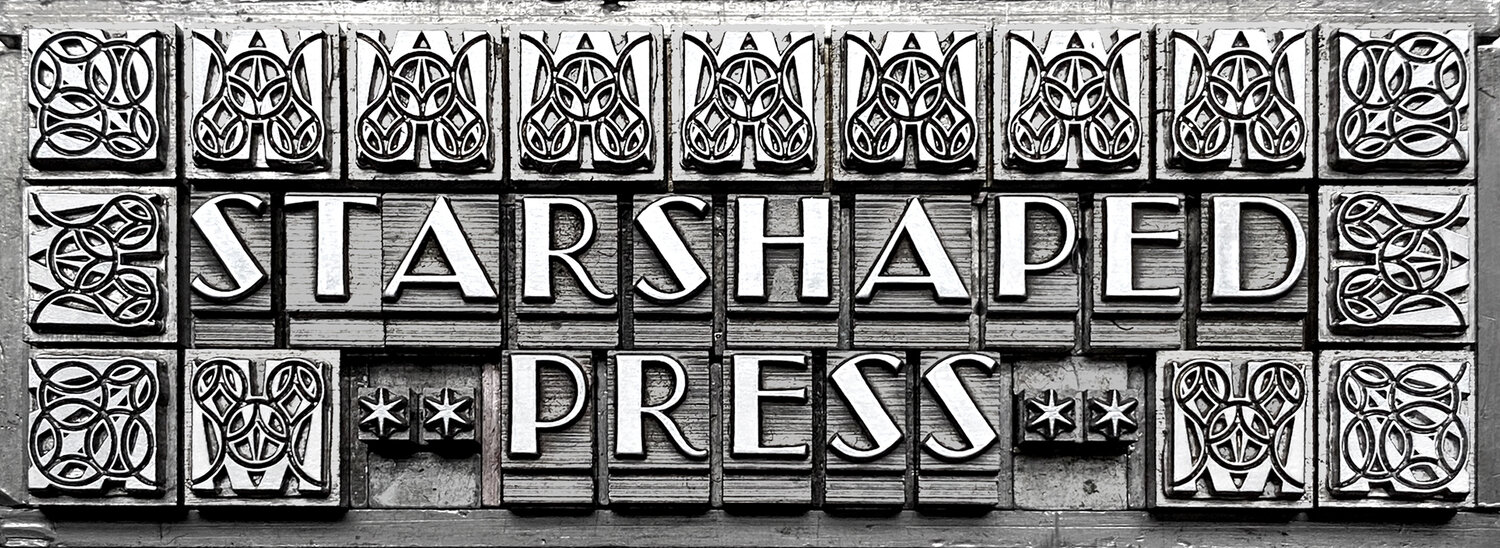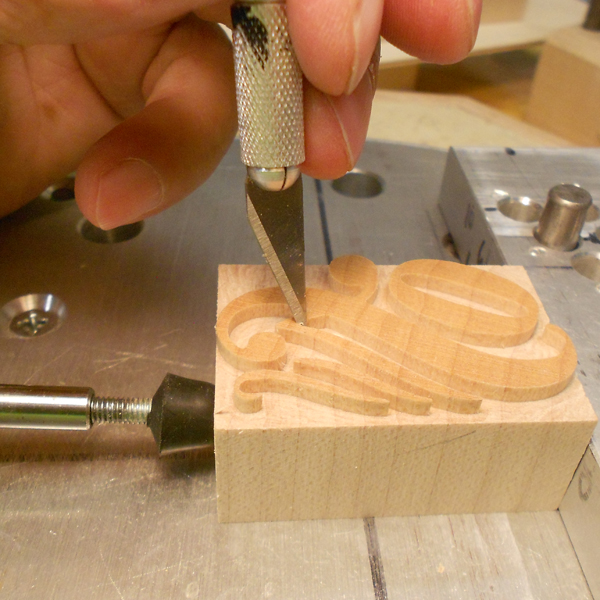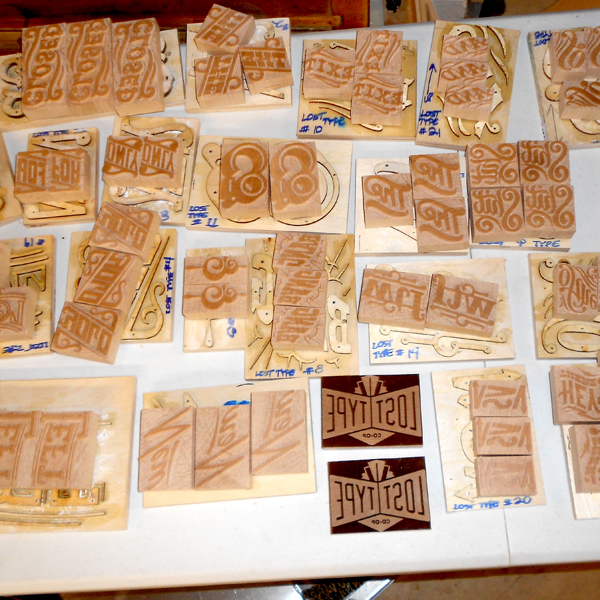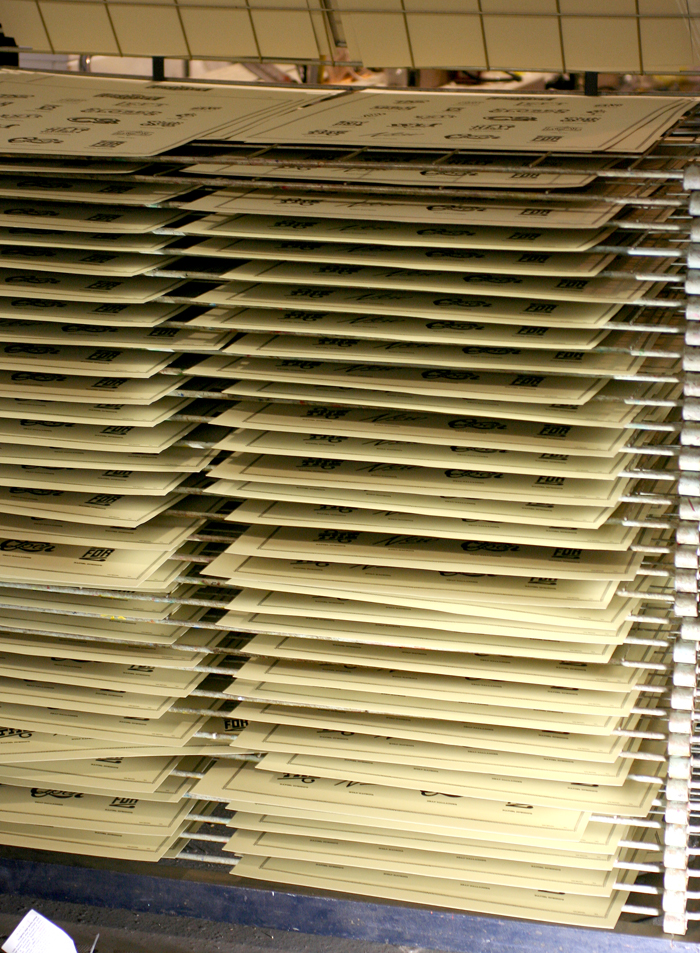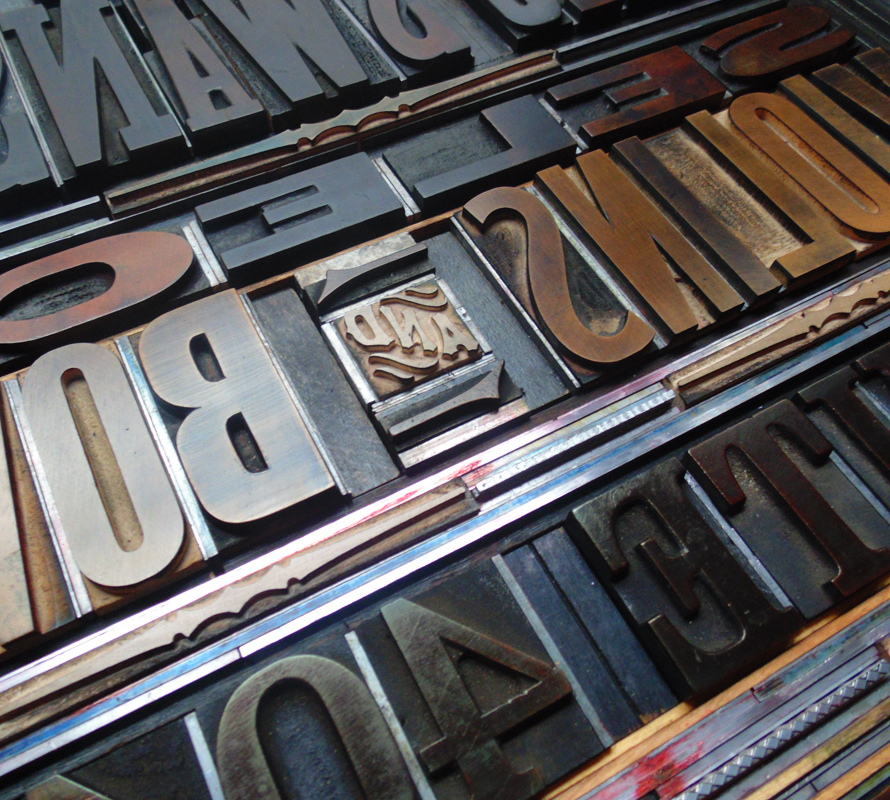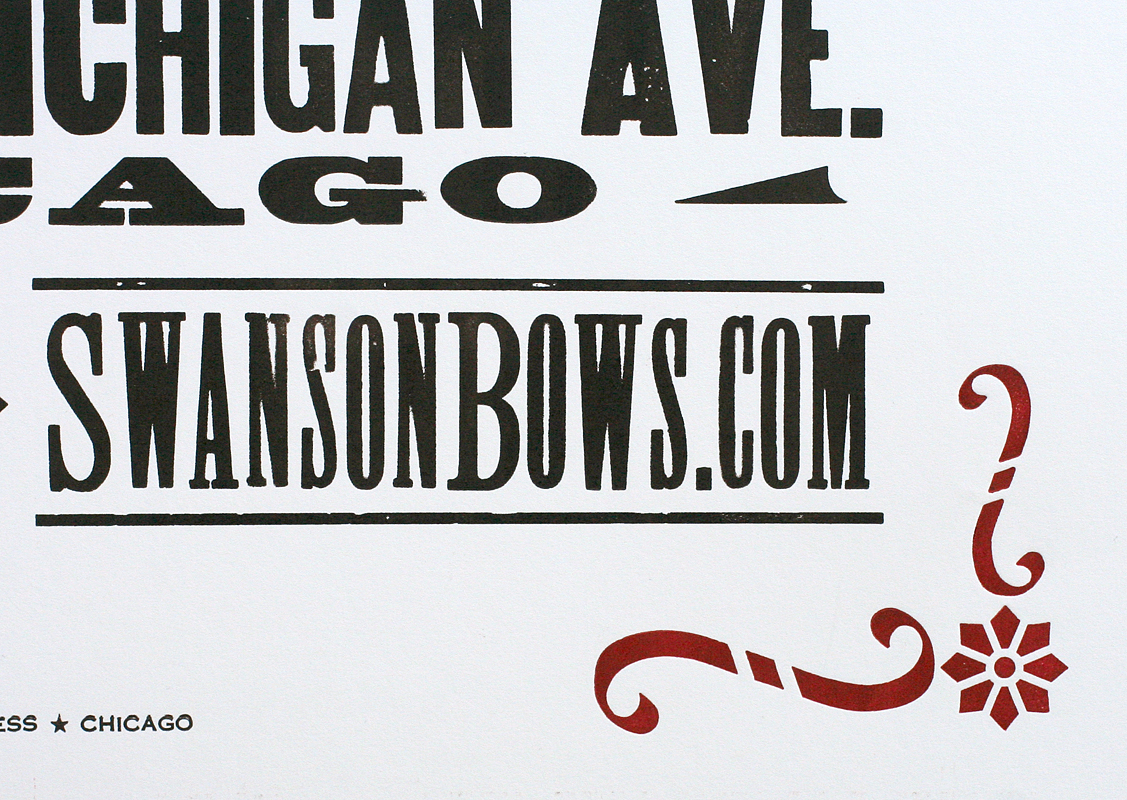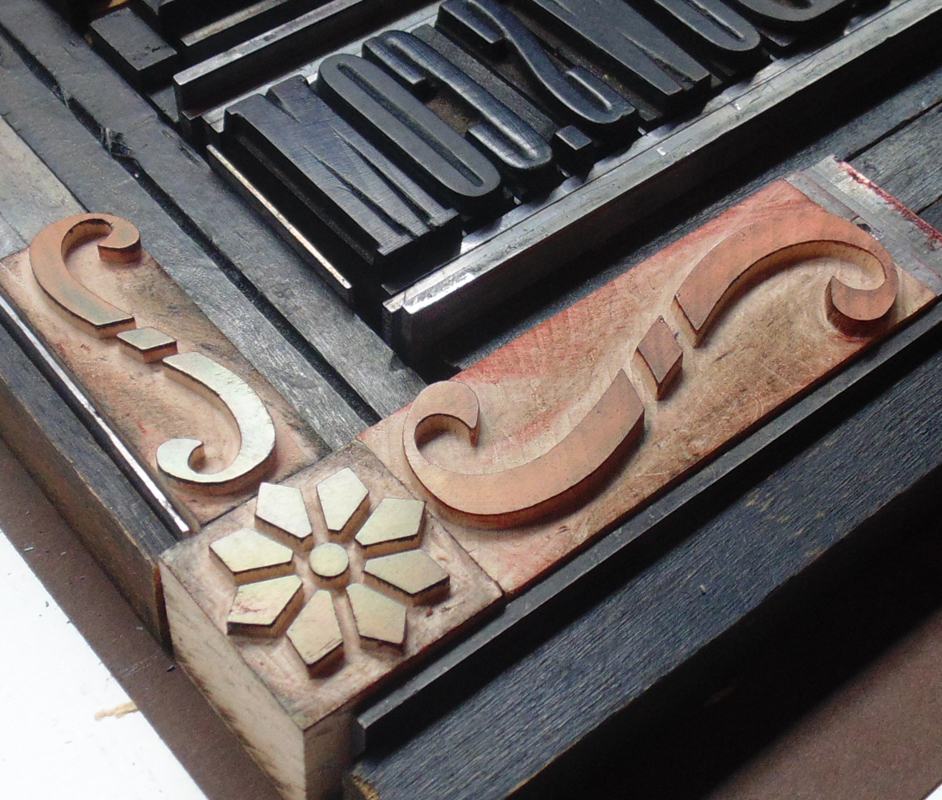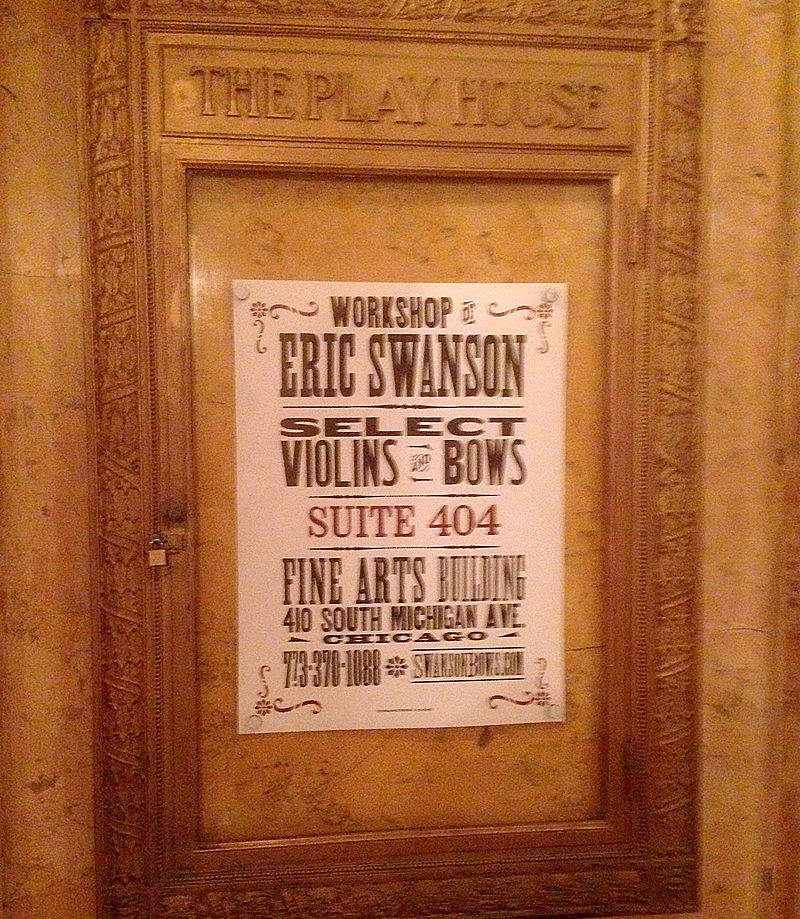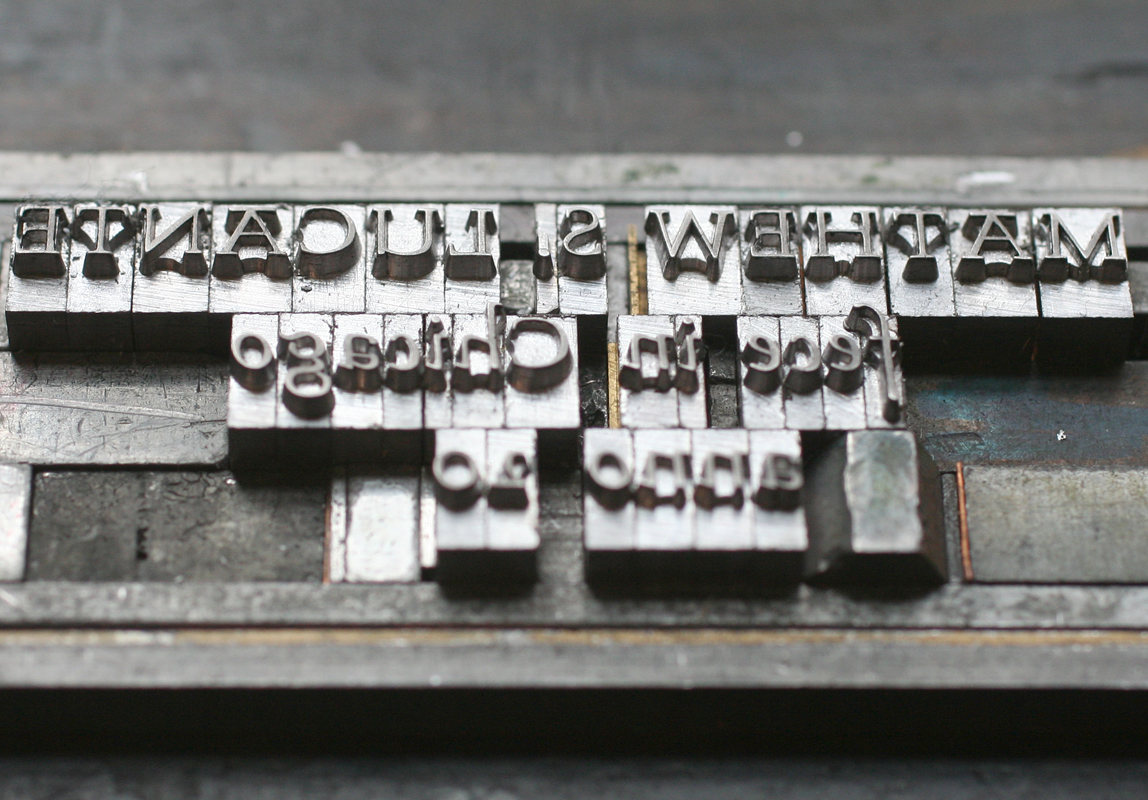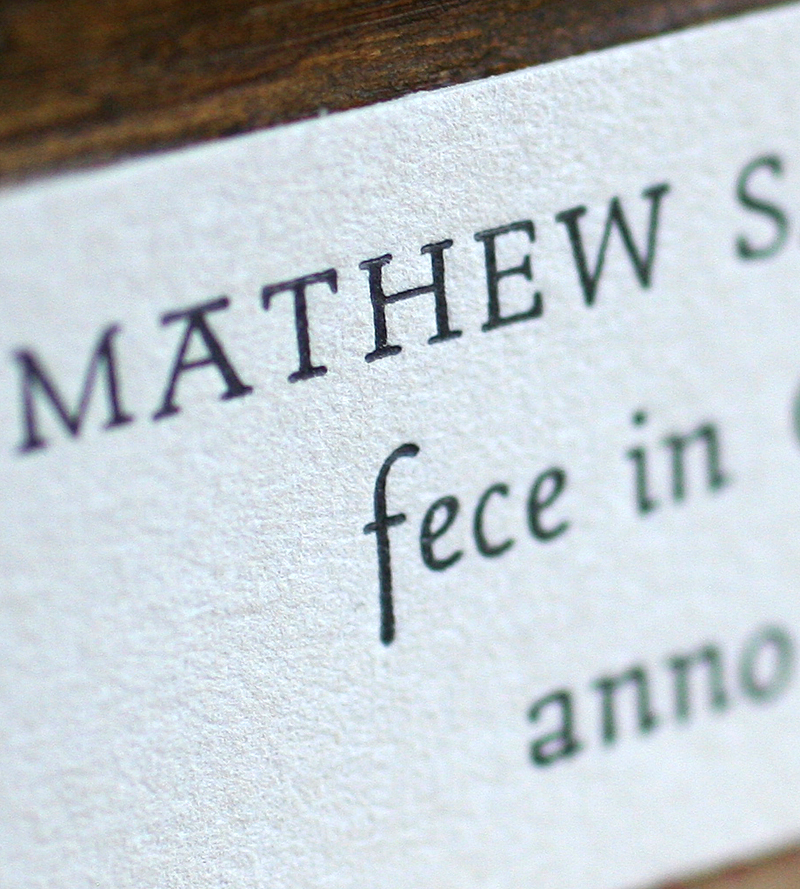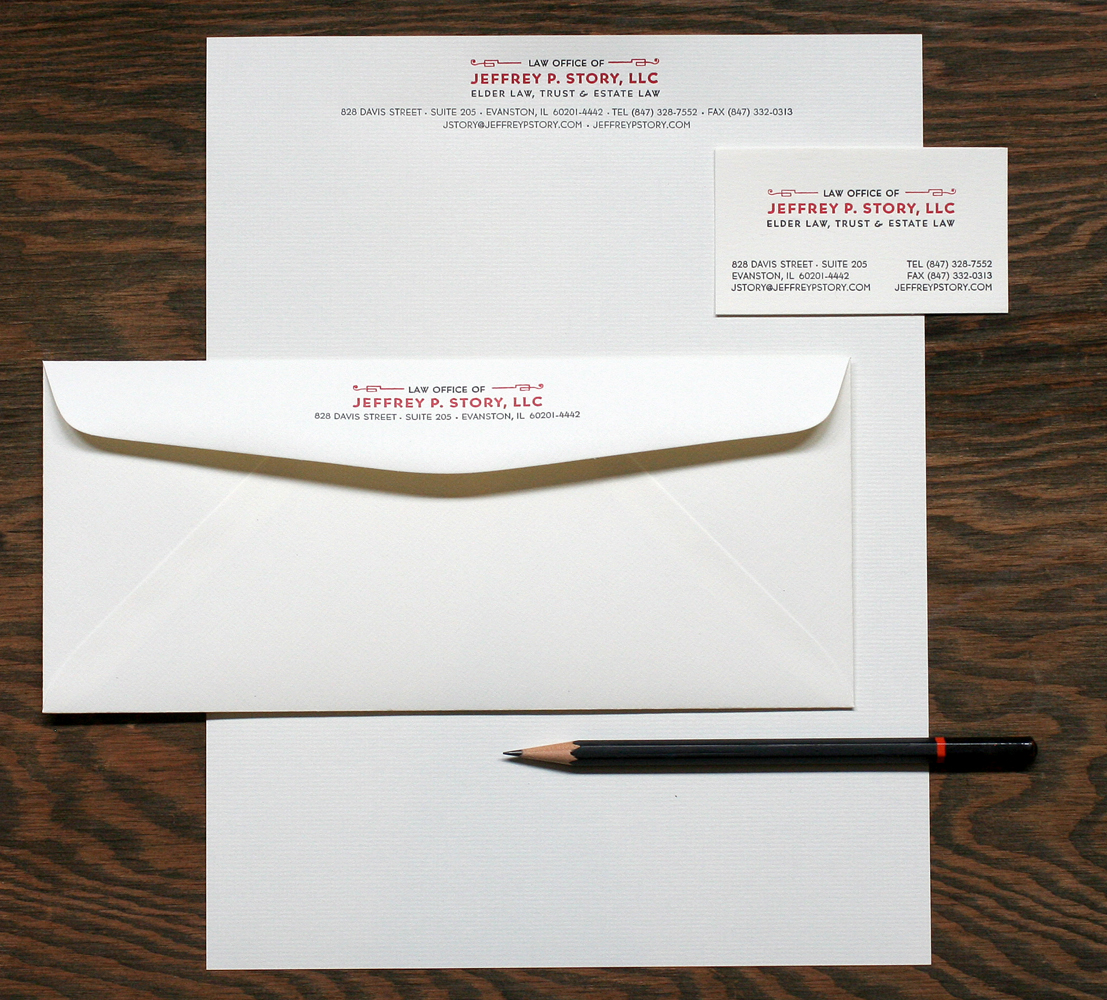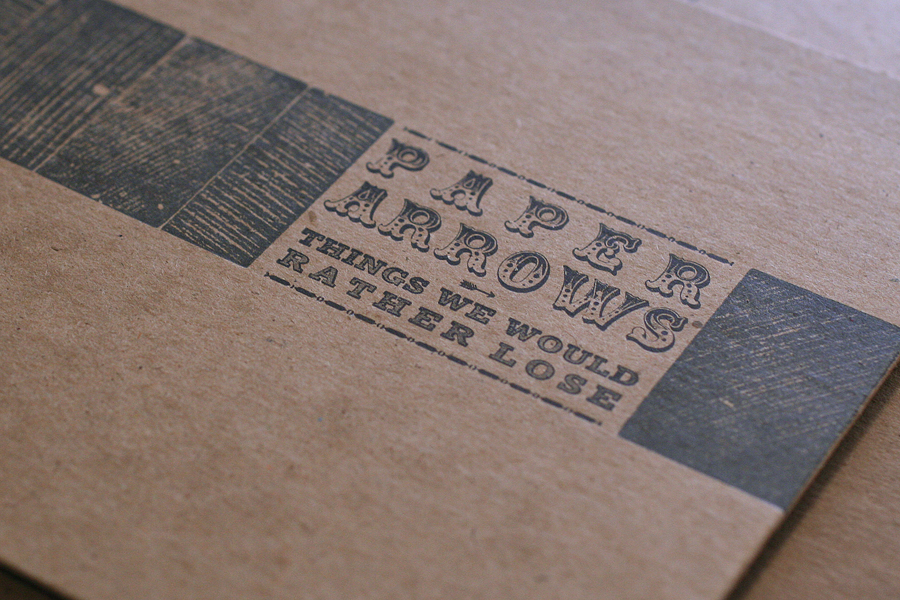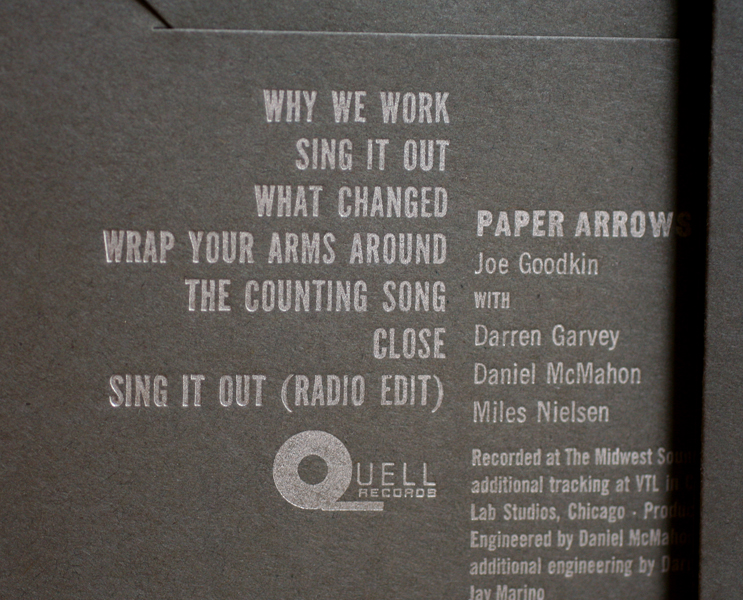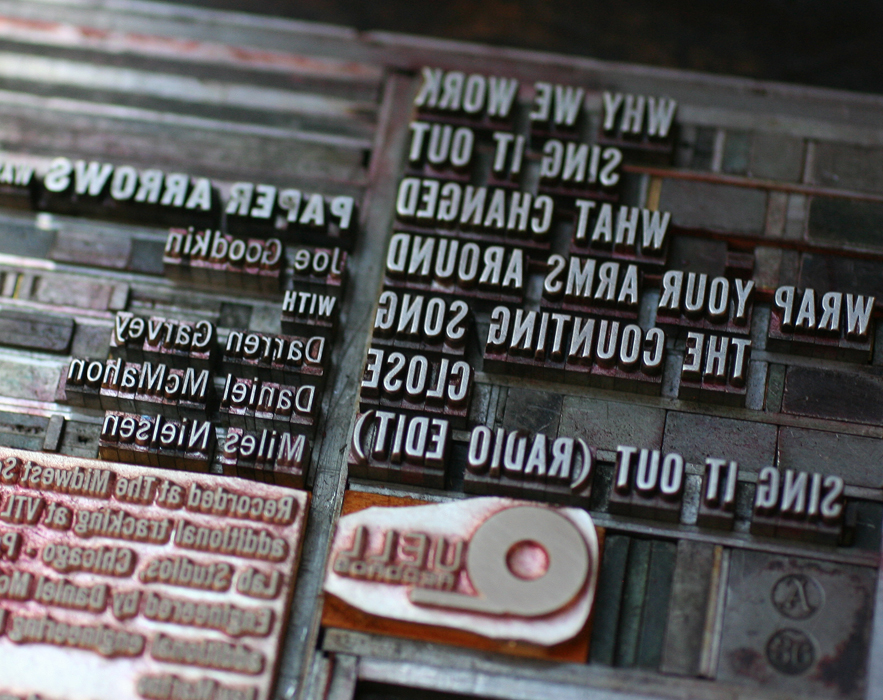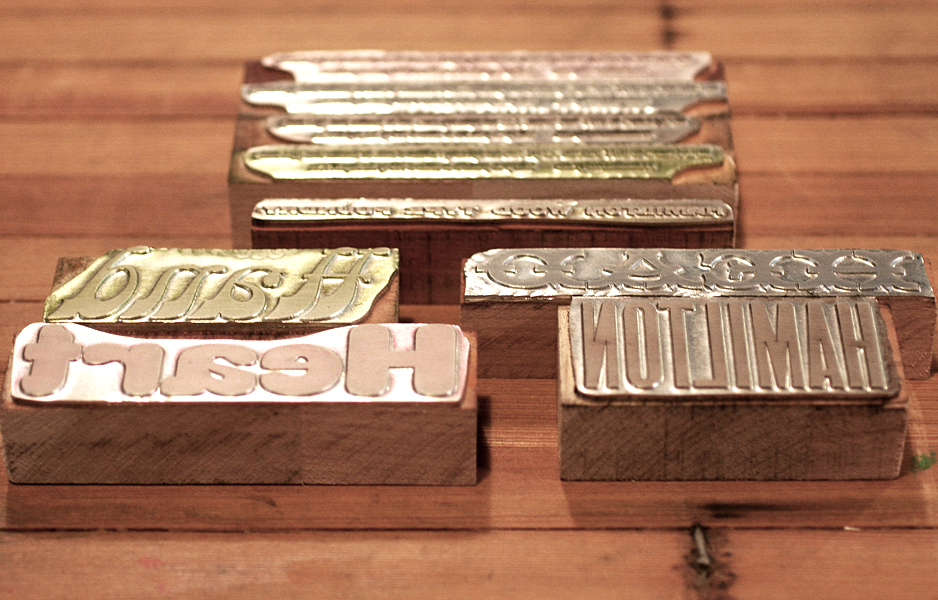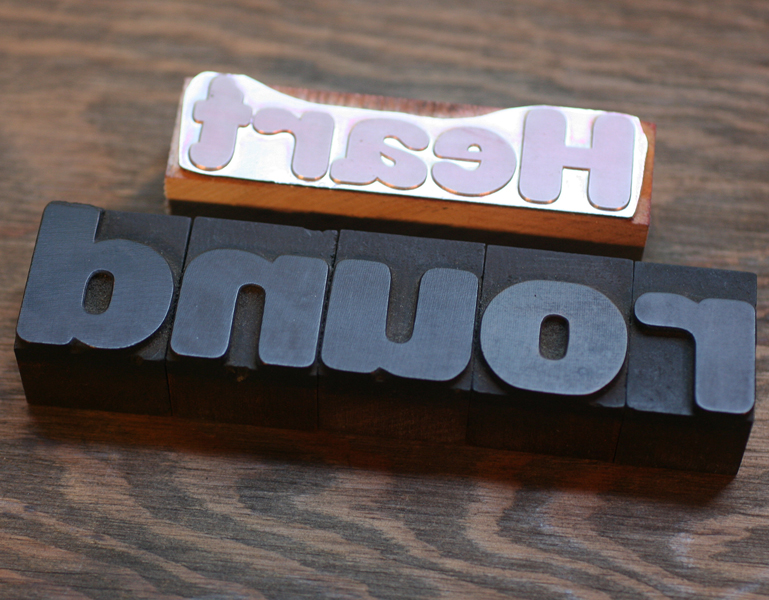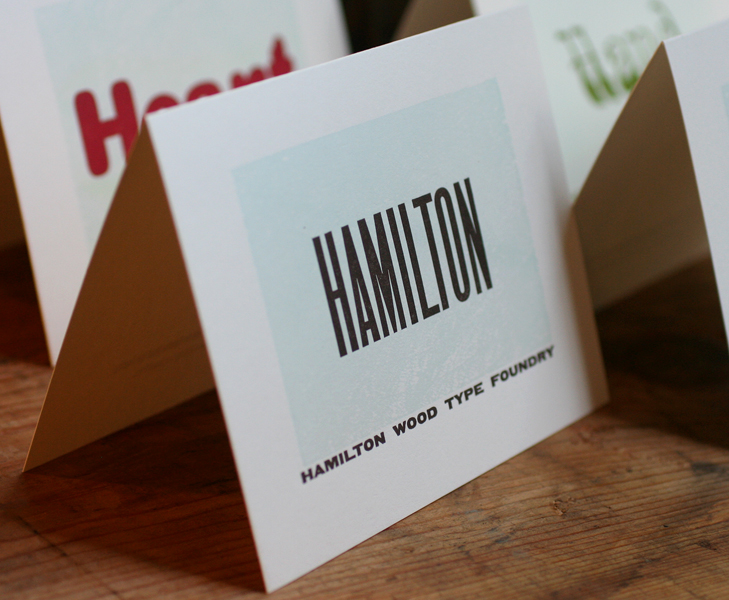Working in a studio alone most days means that it's important to make time for collaboration. Luckily, this happens pretty regularly and these posters for Lost Type are a great example. Working with Dan Gneiding, the designer of Dude Hank along with friend Scott Moore of Moore Wood Type, the poster showcases a set of fabulous new catchphrases designed as digital fonts but cut as wood type, too, as they were traditionally produced. The following images are courtesy of Scott, as he documented his process of converting the files for each catchphrase into actual wood type, starting with the wood planed to type high (just shy of an inch).
The following images are courtesy of Scott, as he documented his process of converting the files for each catchphrase into actual wood type, starting with the wood planed to type high (just shy of an inch).
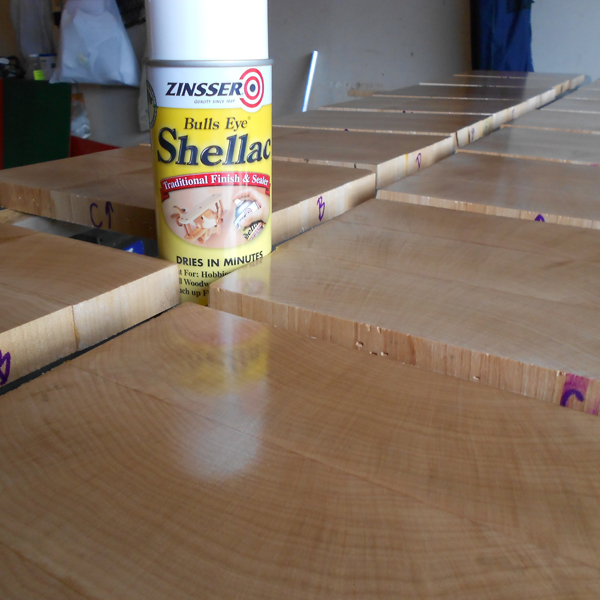 Stencils are created for the pantograph, which traces these while the connecting arm carves the actual wood type block.
Stencils are created for the pantograph, which traces these while the connecting arm carves the actual wood type block.
 Here's a great shot of the original stencil alongside the finished piece of type.
Here's a great shot of the original stencil alongside the finished piece of type.
 The smallest areas and details are trimmed by hand. Love the laboriousness of this process!
The smallest areas and details are trimmed by hand. Love the laboriousness of this process!
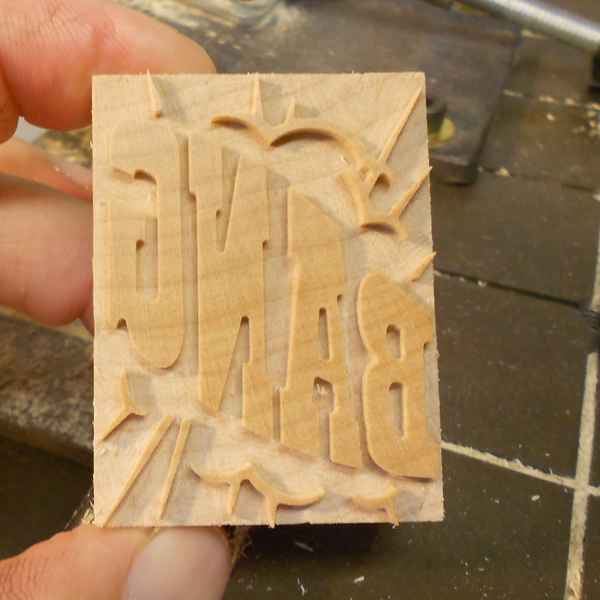 The poster I printed was the combination of a laser cut Lost Type logo, the pantograph cut catchphrases and magnesium plates of the names of the designers underneath.
The poster I printed was the combination of a laser cut Lost Type logo, the pantograph cut catchphrases and magnesium plates of the names of the designers underneath.
 I printed the posters at Jim Pollock's studio, as he owns a Vandercook 320G press, which is substantially larger than our Vandercook SP-15, and capable of printing 18x24" posters.
I printed the posters at Jim Pollock's studio, as he owns a Vandercook 320G press, which is substantially larger than our Vandercook SP-15, and capable of printing 18x24" posters.
 I particularly enjoy this ampersand.
I particularly enjoy this ampersand.
 See that little POOP in there? That one was designed by new friend Frances MacLeod, which I didn't realize until well after this printing!
See that little POOP in there? That one was designed by new friend Frances MacLeod, which I didn't realize until well after this printing!
 The posters had their own dedicated drying rack after printing, which was handy given that there were about 300.
The posters had their own dedicated drying rack after printing, which was handy given that there were about 300.
 The digital catchphrases are now available, so grab 'em and update your look. You can contact Lost Type about acquiring a poster, and Scott Moore about the possibility of getting the real deal in wood.
The digital catchphrases are now available, so grab 'em and update your look. You can contact Lost Type about acquiring a poster, and Scott Moore about the possibility of getting the real deal in wood.
